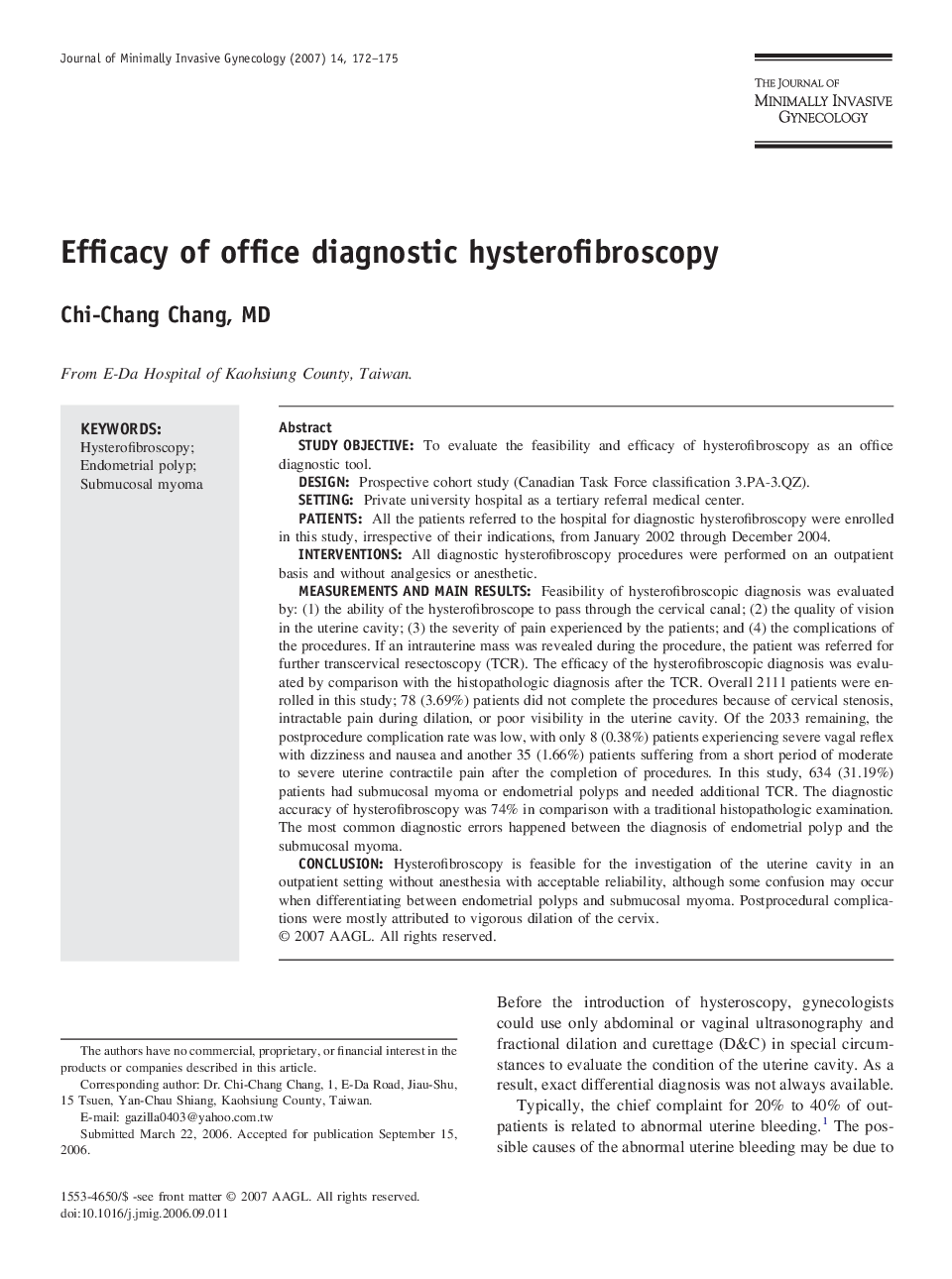| کد مقاله | کد نشریه | سال انتشار | مقاله انگلیسی | نسخه تمام متن |
|---|---|---|---|---|
| 3962668 | 1255667 | 2007 | 4 صفحه PDF | دانلود رایگان |

Study objectiveTo evaluate the feasibility and efficacy of hysterofibroscopy as an office diagnostic tool.DesignProspective cohort study (Canadian Task Force classification 3.PA-3.QZ).SettingPrivate university hospital as a tertiary referral medical center.PatientsAll the patients referred to the hospital for diagnostic hysterofibroscopy were enrolled in this study, irrespective of their indications, from January 2002 through December 2004.InterventionsAll diagnostic hysterofibroscopy procedures were performed on an outpatient basis and without analgesics or anesthetic.Measurements and main resultsFeasibility of hysterofibroscopic diagnosis was evaluated by: (1) the ability of the hysterofibroscope to pass through the cervical canal; (2) the quality of vision in the uterine cavity; (3) the severity of pain experienced by the patients; and (4) the complications of the procedures. If an intrauterine mass was revealed during the procedure, the patient was referred for further transcervical resectoscopy (TCR). The efficacy of the hysterofibroscopic diagnosis was evaluated by comparison with the histopathologic diagnosis after the TCR. Overall 2111 patients were enrolled in this study; 78 (3.69%) patients did not complete the procedures because of cervical stenosis, intractable pain during dilation, or poor visibility in the uterine cavity. Of the 2033 remaining, the postprocedure complication rate was low, with only 8 (0.38%) patients experiencing severe vagal reflex with dizziness and nausea and another 35 (1.66%) patients suffering from a short period of moderate to severe uterine contractile pain after the completion of procedures. In this study, 634 (31.19%) patients had submucosal myoma or endometrial polyps and needed additional TCR. The diagnostic accuracy of hysterofibroscopy was 74% in comparison with a traditional histopathologic examination. The most common diagnostic errors happened between the diagnosis of endometrial polyp and the submucosal myoma.ConclusionHysterofibroscopy is feasible for the investigation of the uterine cavity in an outpatient setting without anesthesia with acceptable reliability, although some confusion may occur when differentiating between endometrial polyps and submucosal myoma. Postprocedural complications were mostly attributed to vigorous dilation of the cervix.
Journal: Journal of Minimally Invasive Gynecology - Volume 14, Issue 2, March–April 2007, Pages 172–175